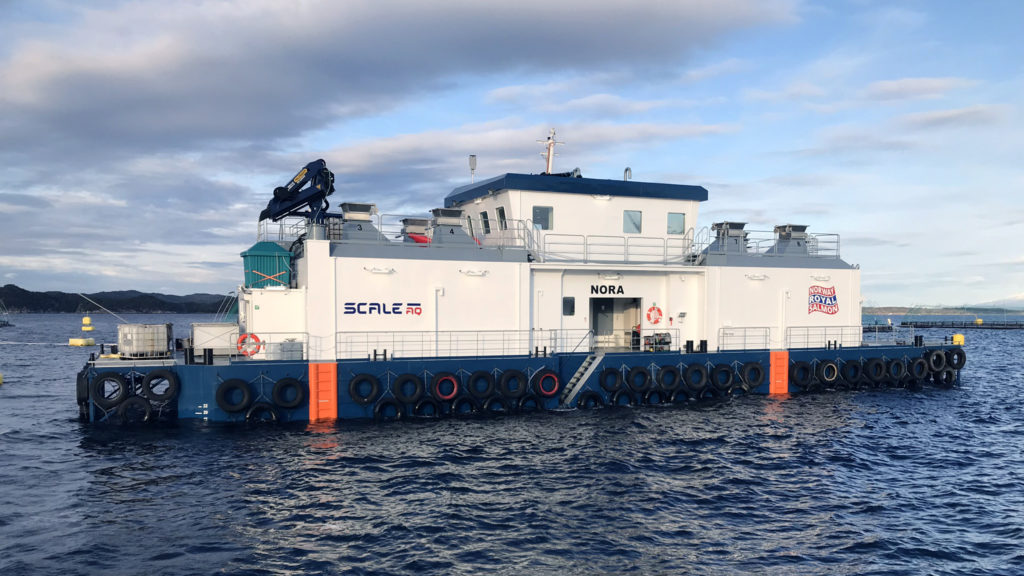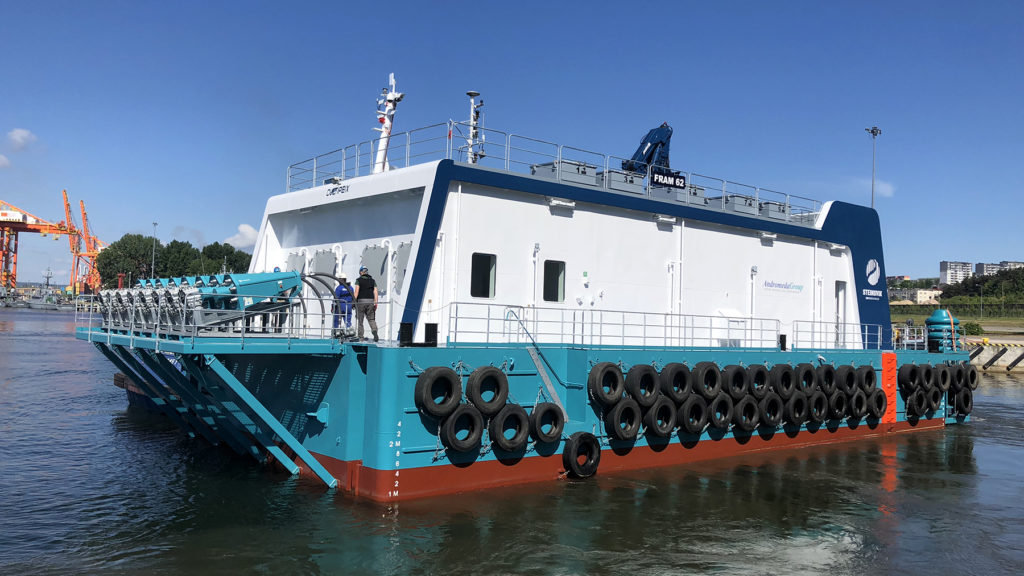Hs
It is important that the barge is adapted to the location in which it is deployed. Exposed locations require barges that can withstand high levels of stress, while for sites further up fjords a more basic structure is sufficient. At ScaleAQ, we supply barges that are certified up to 6.5, which means that you can choose a design to suit your site. Please feel free to use the filter to the left in the menu below if you already know the significant wave height at the site that the barge is to be positioned.
Load capacity
The load capacity for the feeding barge refers to how many tons of feed can be loaded into the silos. What is sometimes forgotten is the capacity and space for all the other things that also need to be brought onto a feeding barge. ScaleAQ offers barge designs that can accommodate between 150 and 900 tons of feed, and which are adapted to their site regardless of whether they are unmanned or serving as a base for both crew and equipment.
Centralized Feeding System
At the heart of a feeding barge is the centralized feeding system. ScaleAQ has more than 35 years of experience in developing and delivering centralized feeding systems to the global aquaculture industry. Our barges can be equipped with up to sixteen feed lines, depending on the size of the barge. With the most user-friendly and future-proofed management software available on the market in the shape of FeedStation – ScaleAQ is the natural choice when you need a feeding system that you can rely on for many years to come.
Barge Control
Our program Barge Control offers the farmer the necessary overview of the entire barge. Generators can be remotely controlled while the bilge pump system can be initiated automatically if the alarm is raised. Meanwhile, the ballast system keeps crew informed about the barge’s trim and allows them to adjust it. The program provides notification of open doors, tank statuses and features internal CCTV which means that the barge can also be operated from shore or a neighboring site.
Ensilage
How the raw material is treated is critical when it comes to the future value of the ensilage. At ScaleAQ, we are committed to working on the development, production, supply and installation of comprehensive dead fish management systems of all sizes. Our barges are supplied with our proprietary systems that are customized to meet your needs.
IoT
The internet of things is an important element to consider when choosing a barge. Most farmers have recognized how valuable data and the insights it provides are to ensure optimized operations across the board on site. Unfortunately, very few sites have the infrastructure in place to secure the flow of data. ScaleAQ supplies its barges with industrial network and server solutions that enable aquaculture operators to make the most of their site’s potential in digital terms.
Hybridization
ScaleAQ has developed a hybrid system for feeding barges which utilizes an EMS system to ensure lower levels of diesel consumption and consequently lower emissions of CO2, NOX and SOX. The resultant noise reduction also enhances working conditions for the crew. A lower load on the generators also helps to reduce maintenance costs and extend the lifespan of the facility. We use cobalt-free batteries approved by DNV-GL, which ensure installations are safe and have a long service life.
Certification
Our feeding barges are designed and built in accordance with all applicable requirements. Certification and adaptation of each barge takes place in accordance with the requirements of both the customer and the authorities (NS-9415, NYTEK). Customizations to fulfil the requirements of Global G.A.P are available.
HSE
HSE is a key area on board our barges and they are equipped with fire and alarm systems, safety ladders on the ship side, boat stairs to allow straightforward board, all necessary emergency exits, concrete floors at the bottom to ensure good working conditions and cleanliness. The generator automatically starts up the bilge pump system in the case of alarms, and there are sensors fitted to the bilge pumps to prevent diesel being pumped out.
Electricity and standards
Our barges are built using definitions and specifications that comply with Norwegian regulatory requirements. TN-S 400V 50 HZ systems are in accordance with FEL, NEK 400:2018 with heaviness in NEK 400-8-820 Aquaculture facilities and machinery regulations. Generators and any onshore power transformers are adapted for use on the barge whether they are used individually or in combination. Hybrid systems are coordinated with the generators.

















